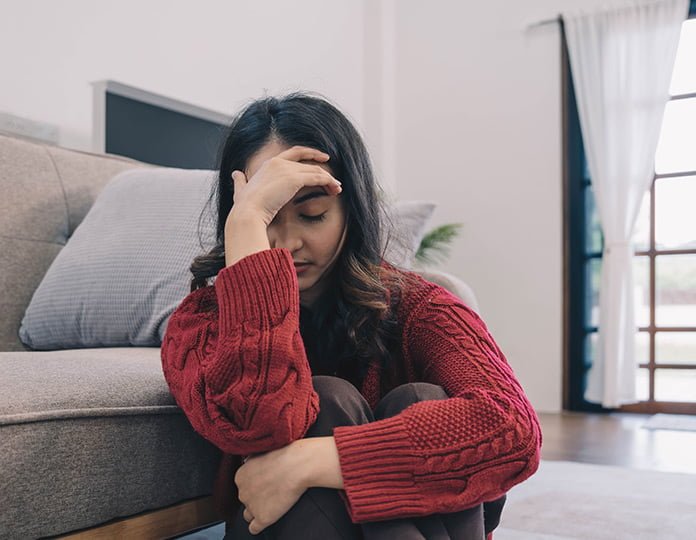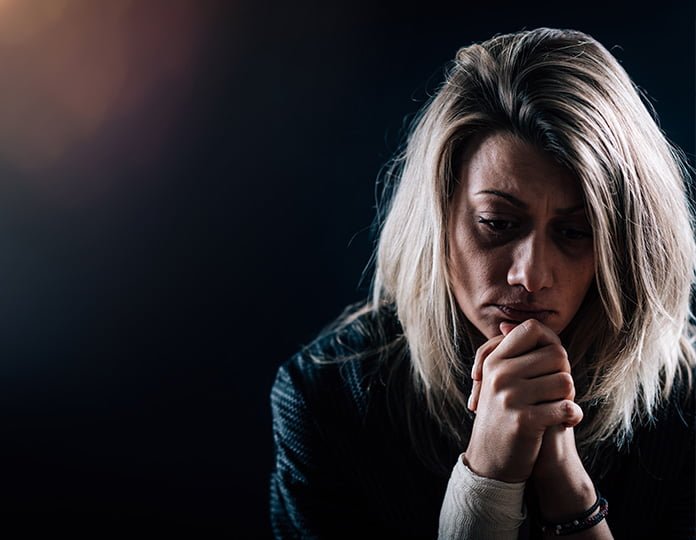Anxiety is an excessive and persistent feeling of tension and worry that influences the physical body by increasing heart rate, rapid breathing, higher blood pressure and feelings of tiredness. Physical symptoms of anxiety can also include dizziness, muscle aches, trembling, dry mouth, excessive sweating, restlessness, light-headedness and a churning feeling in the stomach. Cognitively, anxiety causes recurring intrusive thoughts and beliefs.
Anxiety disorders are reported to constitute 3.6% percent or about 264 million population of the world with 4.6% being females and 2.6% being males globally affected. Though these statistics show the individuals who received proper diagnosis from professionals; many often don’t get their anxiety checked. This may be because they are afraid, don’t consider it as a real problem, can’t find the proper resources or don’t know they have them.
Anxiety Vs Fear
We all have been anxious at some point in our lives. We all also have encountered fear in our life. How is anxiety different from fear? When is anxiety a normal reaction and when is it a problem?
For starters to differentiate between anxiety and fear let’s consider an example. Fear occurs when you are faced with immediate danger and involves the use of all your five senses. For example, you may come across a predator unprotected on a safari tour. In this situation, you see the animal coming towards you, you hear its footsteps when trying to run from it, your smelling sense may be heightened in this situation to find a way back to the bus and you may also feel that the animal near you causing you to run faster. You use all your required senses because your limbic system in the brain turns on the fear response (fight or flight response). This is an automatic reaction which is present-oriented and short-lived.

On the other hand, anxiety is a feeling which involves. When you feel anxious you may experience an uneasy feeling accompanied with fear and dread. This can be a normal reaction. For example, becoming anxious over your exam results. More than being feeling fearful of your test scores and considering it as a threat you may be worried about it. When you are afraid it is often something that is an immediate danger but this is not the case with anxiety. Anxiety is a long-acting and future-oriented response to threats.
When does anxiety become an anxiety disorder?
Being anxious isn’t bad. It is sometimes good to be a little anxious as it could indicate you are taking the task at hand seriously but becoming overly anxious is troublesome. Anxiety may alert you about worse situations and prepare you to focus on mending such situations. In contrast, anxiety disorders involve excessive feelings of anxiousness often inappropriate and damaging to the individual.
Anxiety disorders may cause you to avoid situations in life that trigger or worsen your anxious feeling and bodily reactions. For example, giving a speech in front of a large audience can be nerve-wracking. In this situation, almost anyone would feel anxious. But an individual with an anxiety disorder may experience this situation intensely. They may feel difficulty breathing, trembling, shortness of breath and rapid heart beating causing them to quit or damage themselves physically in the long run if not dealt with. You may try methods to calm this person down but this may come across as a difficult task to achieve.
There are many descriptions of anxiety and the arts surrounding the internet. The major idea everyone may talk about anxiety is that it may impact their life negatively. Their jobs, education, performance and relationship are affected by anxiety. For diagnosis two conditions need to be satisfied:
- The anxious feelings should be out of proportion in the given situation
- These feelings should hinder your ability to function normally.
Types of Anxiety Disorders
Anxiety disorders can be comorbid with other mental conditions such as post-traumatic stress disorder, acute stress disorder, obsessive-compulsive disorder, adjustment disorder and selective mutism. According to American Psychiatric Association, six types of anxiety disorders are considered for diagnosis.
1) Generalized Anxiety Disorder (GAD)
Generalized anxiety disorder is a condition of constant and excessive worry about almost anything which interferes with managing day-to-day activities. These emotional states are accompanied by a set of physical symptoms experienced during anxiety. The worries are focused on everyday things. People with this condition may get anxiety over things like managing their job, the health of their family members and even minor matters like being late to work, forgetting to do chores, house repairs, etc.
2) Panic Disorder
A panic disorder is a recurring and unexpected panic attack that causes a sudden uprising of fear or discomfort reaching a peak within minutes, and during which four or more of the following symptoms occur:
- Palpitations, pounding heart or rapid heart rate
- Sweating
- Trembling or shaking
- A feeling of shortness of breath or smothering sensations
- Chest pain
- Feeling dizzy, light-headed or faint
- Feeling of choking
- Numbness or tingling
- Chills or hot flashes
- Nausea or abdominal pains
- Feeling detached
- Fear of losing control
- Fear of dying
The panic attack should be followed by a persistent worry over the next attack and significant maladaptive changes to behaviour such as avoiding situations due to fear of undergoing a panic attack within one month of its occurrence. People with panic disorder often think they are having a heart attack or life-threatening illness. This is because panic attacks are unexpected but in certain cases may be attributed to fear. The onset of panic disorder is estimated to be 20-24.

3) Specific Phobia
A phobia is a form of extreme and constant fear of something. Specific phobia is extreme and consistent fear of an object, situation or activity which isn’t threatening. These fears affect functioning in life as the individual may go to extreme lengths to avoid the trigger stimulus. For exams, if the person has a phobia of snakes, they may not even be able to glance at a picture of a snake.
4) Agoraphobia
Agoraphobia is an extreme fear of being in situations which are difficult to escape or embarrassing or times when there is no sight of help. This fear is out of proportion and lasts up to more than six months causing difficulty in carrying out daily tasks. Agoraphobia is experienced in situations such as using public transportation, open spaces, enclosed places, in a line, in a crowd, or at home alone. This can even cause the person to never leave their house.
5) Social Anxiety Disorder
Social anxiety disorder or social phobia is a condition when people experience significant anxious or discomfort in social interactions because they feel they may embarrass themselves. They avoid situations or endure their extreme anxious about not being humiliated, rejected or looked down on during social situations. For example, people with social anxiety disorder may avoid drinking or eating in public because they feel like their table manners are embarrassing to be seen by others.
6) Separation Anxiety Disorder
This disorder is common mostly among children. Separation anxiety disorder is a condition that occurs when people become extremely afraid of the idea of their loved ones being separated from them. For example, a child may start to throw tantrums whenever their mother leaves even if the separation is only for five minutes. For diagnosis, these feelings or behaviours should persist for at least four weeks in children and six months in adults. This disorder can cause the individual to lose sleep or experience nightmares about separation. The physical symptoms can even carry into adulthood.
Other forms of anxiety disorders exist but they are not as common as the above six. The causes of anxiety disorders haven’t been identified but studies attribute it to genetic, environmental, psychological and developmental factors. Genetic and environmental stressors are said to prolong the condition. Anxiety disorders are treated through medications and psychotherapy. Anti-anxiety medications, antidepressants and beta-blockers are commonly used medications for anxiety. Psychotherapies include cognitive-behavioural therapy, systematic desensitization and aversion therapy.













Leave feedback about this